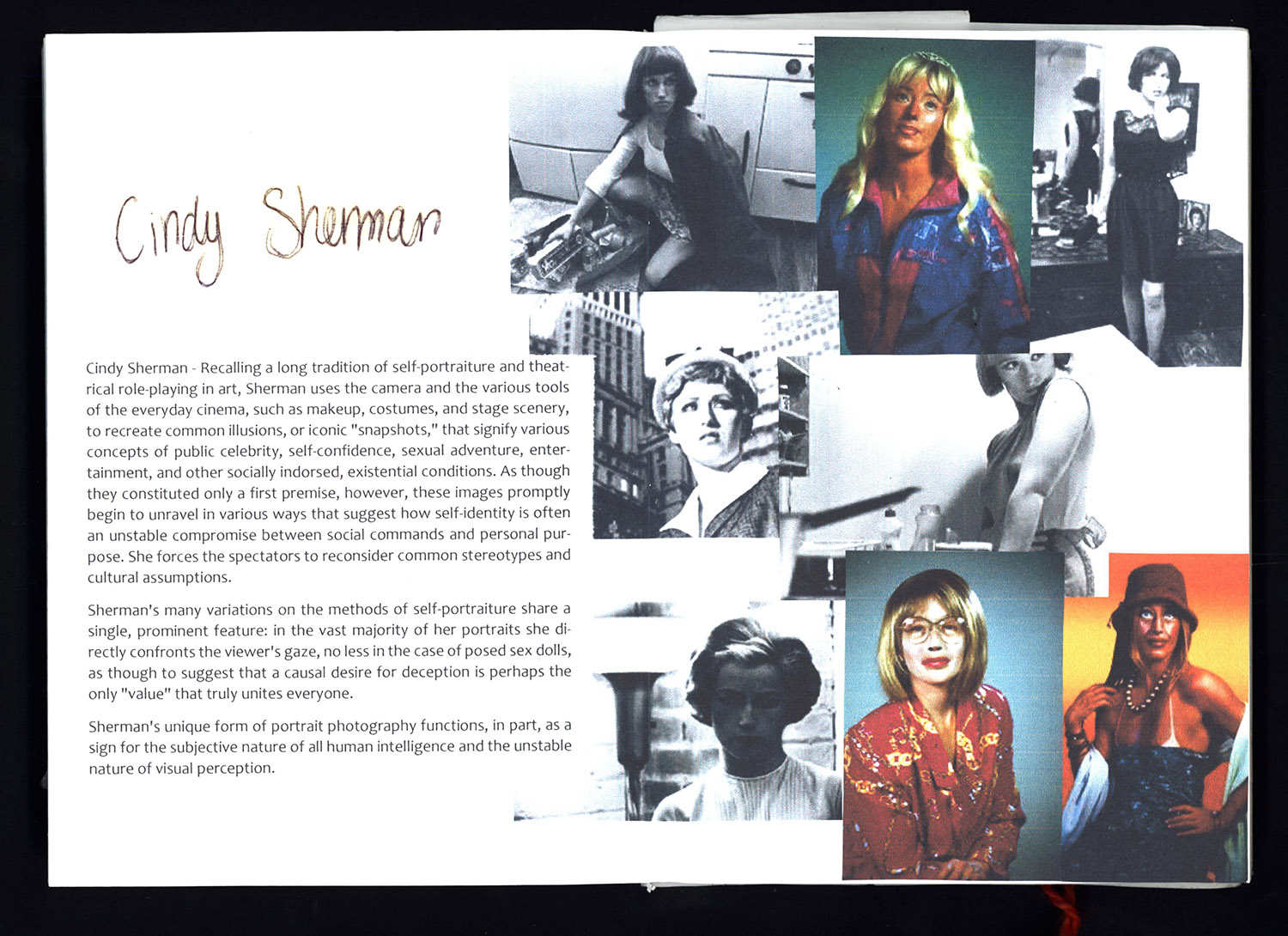How to research an A-Level photography project
What makes good research? What makes a good project?
You need to create good quality research, but what does that mean?
In this article I will go over the nuances of good quality research for your photography A-Level to help you maximise your potential to gain marks.
The example I have used is from a student who achieved an A grade in her unit 4, her project was Portraits. I have only used sections of the book as examples, this is not the complete project.
First, artist research.


Why is it good?
Style is consistent, the student has a clear visual identity. The content is consistent, each photographer deals with similar ideas and themes, namely, questioning identity through portraiture.

Further research

If you truly love a subject, you will want to know everything about it.
This project deals with image, representation of women, self discovery and feminism. Rather than only researching the photographers themselves, the student chose to research the topic of feminism itself, going beyond the first layer of research and adding depth to the project. This in turn informed the student of the ideas behind the movement, the ideology of feminism and helped underpin and add weight to the creative decisions made within the project. Research is your opportunity to show off all of your relevant knowledge. Depth of knowledge and a sophisticated use of language are key to accessing higher marks.
Flow diagram

Why is it useful?
It informs the reader of your thought process and allows them to understand the creative decisions you made and how you generated ideas.
IT’S SCRUFFY!
You are not making a portfolio, it is a work book. It does not have to be clean and polished. Scribble, doodle and make notes. Make sure that the evolution of your ideas is obvious.
This is particularly true of unit 3. It is important that you demonstrate how your ideas are being generated, how you are influenced by others work and then the outcomes you intend to create. This also shows how you are refining and developing an idea, a key part of the mark scheme.

Photographic theory
If you intend to study a creative subject at degree level, you will encounter the world of conceptual art and be encouraged to explore it. Advanced students should be exploring this as early as possible. All children are remarkably good at analysing photographs and art work, GCSE’s often educate that ability out of them as it is too focused on teaching facts.
Everyone can analyse and interpret art, you just need the right tools.
Photographic theory and conceptual art will add further weight to your investigation. In the same way you would quote an extract of Shakespeare when analysing his work, referencing photographic theorists will add weight to your argument and lead you further down the line of questioning. Unit 3 is an exploration of an idea. You are developing and adding to your knowledge, the more knowledge you have, the more sophisticated your work will become. The highlighting of the text clearly shows the parts that are relevant to the students work, they then use these later in the project when interpreting and developing their own work.


Why is it good?
Constant questioning leads onto further development of the project. The student can then create new thought diagrams and new test shoots all based around the questions raised from this shoot, and the project continues to develop. Based upon in depth research of feminism, identity and John Berger, the philosophical elements of the project emerge in the writing. The photographs are self portraits, exploring ones identity is extremely personal and again is part of the marking criteria.

The final passage is detailed, well constructed and demonstrates a strong command of the English language and application of a specialist vocabulary. The final passage is open ended, all art projects are ongoing and always evolving.
